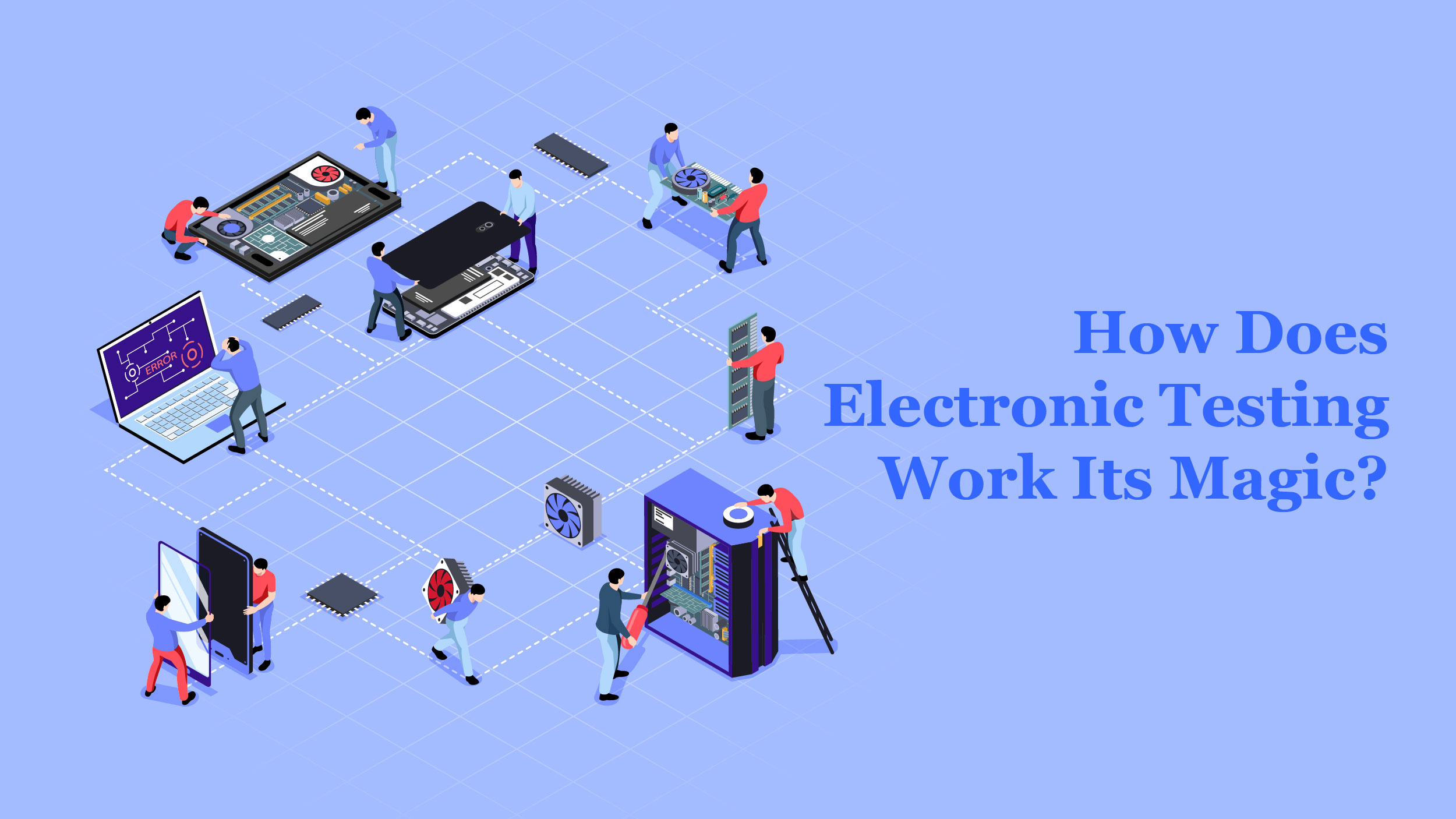In today’s modern society, electronic devices are ubiquitous and hold immense significance, serving crucial functions such as information processing, telecommunication, signal processing, and the creation and distribution of the very device you’re using to read this guide.
Given the profound impact of electronic devices and their components on our lives, it is crucial for these products to undergo rigorous testing during production and before entering the market. Electronic testing is necessary to ensure functionality, legality, and safety. Moreover, throughout the lifecycle of an electronic product, it is essential to monitor its performance and safety, as these devices can gradually deteriorate over time, leading to potential failures and reduced efficiency. By adhering to stringent quality standards, we can mitigate safety concerns and maximize the reliability and performance of our electronic devices.
Let’s dig in to learn more about the testing of electronics along with its methods, standards and various electronic testing equipment available in the market.
What is Electronic Testing and Why is it Important?
To put it simply, electronic testing is the process of examining electronic parts, circuits, and systems to make sure they work properly and adhere to the required specifications and standards. Functional testing, performance testing, environmental testing, and other sorts of tests and measurements can be used in this.
The importance of such testing cannot be overstated. First off, it contributes to the reliability and safety of electronic equipment, especially in high-risk industries like aerospace & defense, medical devices, and other similar applications. Second, testing can help find and fix problems with electrical equipment before they are put on the market, which can help users avoid potential safety risks and save time & money. The performance and functionality of electrical devices can also be improved through testing, which could result in better products and a competitive edge in the market.
How Does Electronic Testing Work Its Magic?

The following list includes the most typical uses for electronic testing equipment:
- At the research and development (R&D) stage, the circuit’s performance and potential flaws are tested.
- Production testing that reveals component-level flaws, flawed circuits, overloading connections, and high resistances
- Checking the overall performance of the electrical gadget and comparing it to the design requirements
- Confirming fundamental electronic properties including voltage, current, resistance, conductance, and capacitance. If the item is a measurement instrument, this can be useful both during the design phase and during routine maintenance.
Before distribution and use, the testing of electronics is divided into stages. This is done to identify and fix any potential issues, allowing the product to function at its best.
Proper electronics testing processes must be carried out at each stage of the product life cycle if you design or produce any form of electronic test equipment, including:
- An R&D proof of concept test
- Testing a finalized design against the specification is part of the design
- Regular calibration if there are measurement instruments
- Troubleshooting – when the equipment breaks
- Hardware safety testing on a regular basis
Quantitative information regarding the performance of electronic equipment can only be gathered through electronic test and measurement. Engineers evaluate different parameters, including voltage, current, frequency, and resistance, among others, using a variety of measurement techniques. These metrics aid in spotting departures from expected behavior and direct engineers in designing more effective solutions and troubleshooting problems.
Which Electronic Testing Methods Power Our Gadgets?

Electronic components or systems are tested using various techniques to make sure they work properly and adhere to the relevant requirements and standards. Some common testing methods are listed below.
1. Functional Testing:
One of the most basic types of electronic testing is functional testing. It entails determining whether an electronic gadget carries out its intended functions in accordance with the design specifications. To make sure the device operates as predicted, engineers subject it to numerous inputs and monitor the accompanying outputs.
2. Environmental Testing:
Throughout their lifespan, electronic gadgets frequently come into contact with a variety of environmental factors. Environmental testing is done to assure its durability and resistance. This method evaluates how a piece of equipment performs in conditions of high or low humidity, vibration, and shock.
For industries where equipment must withstand extreme circumstances, like aerospace, automotive, and outdoor electronics, this is an essential form of electronic testing.
3. Electromagnetic Compatibility (EMC) Testing:
Electronic devices must live in harmony with one another in a world that is becoming more interconnected. The electromagnetic emissions and susceptibility to outside interference of a device are evaluated through EMC testing. It makes sure that a device can operate in the electromagnetic environment it was designed for without adversely influencing the surrounding systems or devices.
EMC testing comprises susceptibility tests, conducted emission tests, and radiated emissions tests.
4. In-Circuit Testing (ICT):
The quality of printed circuit boards (PCBs) and the components built on them are frequently evaluated throughout the manufacturing process using in-circuit testing (ICT). Multiple components can be tested quickly and effectively since the PCB is tested while it is placed on the production line.
Electrical properties, including resistance, capacitance, and inductance, are measured through ICT using test probes.
5. Boundary Scan Testing:
System-on-chip (SoC) devices and complicated integrated circuits both benefit greatly from boundary scan testing. Engineers are able to control and monitor signals on a device’s input and output pins through the use of standardized logic cells. This method aids in confirming the appropriate connections and operation of complex components.
Electronic Test Standards to Ensure Quality
Electronic testing standards are set rules and requirements that outline the steps, standards, and conditions for evaluating electronic devices, systems, and components. These standards guarantee the testing process’ consistency, precision, and dependability, permitting efficient communication and comparison of results across various manufacturers and industries.
Organizations like the International Electrotechnical Commission (IEC), the Joint Electron Device Engineering Council (JEDEC), and the Institute of Electrical and Electronics Engineers (IEEE) establish certain widely used electronic test standards. These standards encompass a variety of electronic testing topics, such as electromagnetic compatibility (EMC), performance, interoperability, safety, and environmental factors. Examples of specific electronic test standards include IEEE 1149.1 (JTAG), IEC 60068 series (environmental testing), and IEC 61000 series (EMC testing).
Adhering to electronic test standards can have a number of benefits. It helps manufacturers produce high-quality and safe products and promotes compliance with laws and industry standards. It also enables consumers to make wise judgements based on standardized performance measurements. Furthermore, following these standards levels the playing field for producers all around the world while encouraging innovation and technological upgradation.
Does Electronic Testing Seal the Deal?
A crucial element in the process of developing dependable and secure electronic equipment is electronic testing. Manufacturers may make sure their products live up to the high demands of contemporary consumers by using specialized electronic test equipment and complying with industry regulations. Effective testing promotes innovation and growth in the field of electronics by improving the overall quality and performance of electronic equipment while enabling the identification and correction of flaws.




